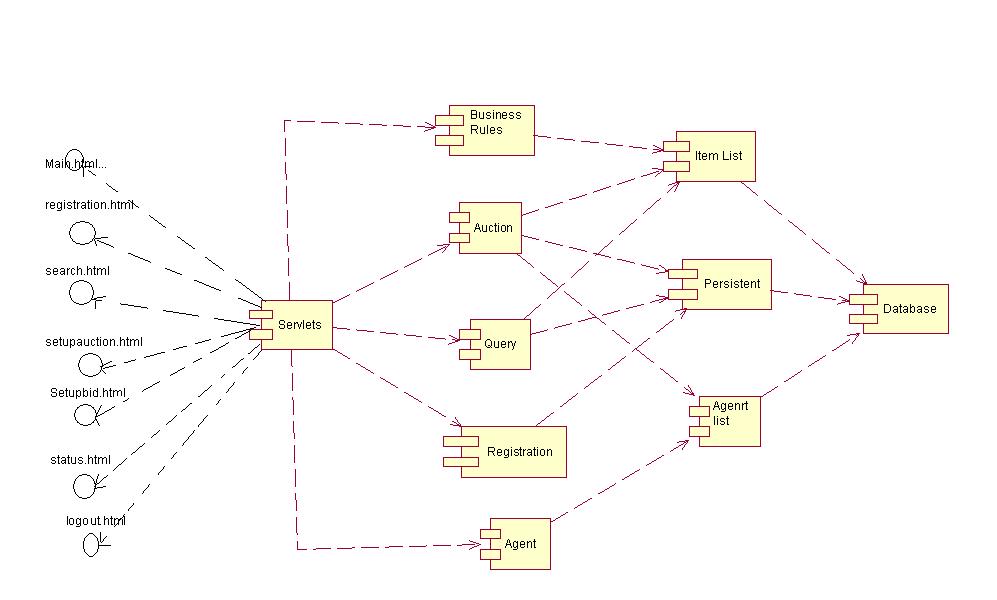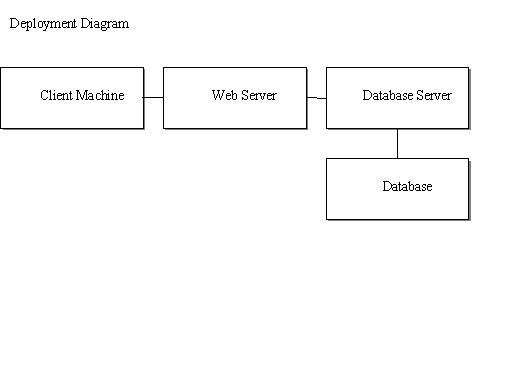|
|
4. Architectural Specification
In this the architecture is specified by Component
,Package and Deployment diagrams
4.1 Package diagram :

4.2 Component Diagram

4.3 Deployment Diagram :

4.3 Architectural Style :Thin Web Client.
Thin web client architectural pattern is used in which only the minimal
client configuration can be guaranteed and all the business logic is executed on
the server. The system is using a server side processing which entails a heavier
load on the system. This load can be distributed to clients side as an
alternative. Since we are separating the business objects and the utility
objects we may find slower response time. The system uses java and this
may lead to slower performance compared to other technologies.
4.5 Major Components and Connectors:-
Web Client (Browser): This is any standard forms-capable HTML browser.
When used with thin client architecture the only service browser provides is the
ability accept and send information and then display data. All the
interactions of the user to the Server is through browser. The user requests for
WebPages or other information to the server through this interface. The returned
page contains a fully formatted user interface - text and input controls - which
is rendered by the browser on the client display.
Web Server: This is the principle access point to all web browsers.
Client browsers in the Thin Web client architecture access the system through
only the web server.. The Web Server accepts requests for WebPages (either
static HTML or Server Pages) form Client. If a client requests for a static page
Server just transfers the Page. If the request is for server scripted page, the
Web
Server will delegate the processing to the appropriate script interpreter or
executable module. In any case, the result is an HTML- formatted page, suitable
for rendering by an HTML browser.
HTTP connection: Hyper Text Transfer Protocol which is used between
client browsers and Web Servers which gives a connectionless type of
communication between the client and server. A new connection is established
between the client and server each time they want to communicate and once the
requested is granted the connection is terminated.
HTML Page: A web page with user interface and content information that
does not go through any server side processing. These pages contains explanatory
text such as information about the system or HTML input forms. The server just
retrieves the html page and pass it on to the client upon a request for an HTML
page.
Server Page: These are web pages that go through some computation in
server side. These server pages are implemented in our server as Java Server
Pages and java servlets. A server page will have access to other important
server side components in the system such as business logic component and
database.
Database: This component is used in our web application to make the
business data persistent.This done by using persistent classes.
|
 Gopinath
Narendra U.P
Back
Gopinath
Narendra U.P
Back


